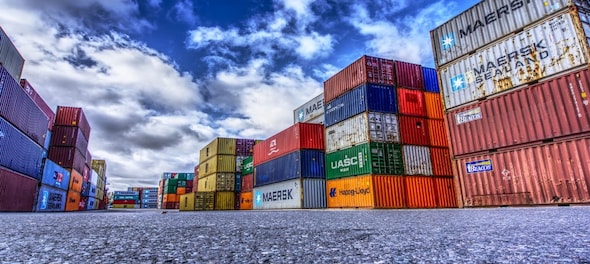
China is becoming a laggard in shipping products, though the fault lines lie in the west. Freight rates from China to the US and Europe have risen as much as 300 percent compared to last March lows, leading to a container shortage.
A sudden improvement in exports and a slump in imports, especially from China, have created a shortage of containers for exports. China's trade partners are the most affected due to uneven global recovery. The effect is now seeping into other countries since containers are a part of a global logistical cycle.
In December, spot freight rates were over 250 percent high YoY for the Asia-North Europe route. From the Asia-West US route, rates were up 145 percent YoY.
India-China trade routes are getting marginally better, meaning that companies have to pay a premium for on-time delivery. The same cannot be said for the West, meaning no on-time delivery despite paying a premium. E-commerce sector is worse affected, but ultimately, consumers will bear the brunt.
To make matters worse experts believe the situation may continue beyond the current fiscal.
What is container imbalance?
For shipping products, shipping lines use containers, and the prices of shipping containers to countries such as the US and Europe have more than tripled in the past few months.
Usually, companies expect containers that go to other countries to come back with the said countries’ exports. But western countries are yet to go back to their previous economic finesse. If a Chinese company is looking for containers, it will have to pay a hefty amount since it is coming back empty.
And that makes sense; why should shipping companies bear the cost of sending and receiving empty containers?
But if you don’t want to pay extra, the containers pile up at one location while other locations face scarcity. This is called container imbalance.
There are about 180 million containers in the world, but all in the wrong places.
Why is it happening?
When the lockdowns were at their peak and trading was down, the shipping lines had to cut the capacity, and ally transportation systems like trucks were unavailable.
Now when the exports are rebounding, and imports are falling in one part of the world, the containers are piling up in some ports (read: West) and becoming scarce in others.
China is exporting a lot more than it is importing. Its economy has worked back up faster so while the containers are needed in China to export, it cannot because they are in the western countries, who don’t really have much to export.
Besides, when the pandemic hit, orders for new containers were largely cancelled. Due to which, shipping companies, on their own cost, had to ship them inside the countries and away from the ports. Now calling them back is further adding to the prices and delaying shipping.
The shipping companies did not see the sudden economic recovery coming until it hit them with force.
Moreover, as airlines reined in their capacity, the high-value goods that used to be delivered via air has to be sent via water. This is adding pressure on the shipping companies who would have otherwise enjoyed the extra business.
Other factors causing the shortage
Shipping companies had cut down their capacity by some 25 percent on the backs of low demand due to the pandemic. Between March 23 to April 15, no containers were cleared, which further exacerbated the issue.
Vessels are being quarantined in countries, and they are carrying out additional checks on Chinese shipments, and an overall negative outlook for China worsened the issue.
Carotar rules implemented by the Customs to check the stock of the importers have caused further delays in shipments by delaying the assessment of bills of entry. Some technical glitches in the clearance procedure implemented by customs officials did not help the deteriorating conditions.
What is the scene now?
Companies are racing against time to build new containers. However, experts suggest it will take time. Shanghai International Shipping Research Center released a report that said the issue is likely to continue for another three months.
So even though governments are encouraging the manufacturing of containers, it does not seem likely in the next three months. More so because the pandemic also impacted the supply of steel and lumber – the two essential components needed to build containers.
In India, the issue has kicked off the clearing of 50,000 long-standing containers that have been around for years. The contents of the containers would be auctioned, and the containers would be sent to shipping lines.
Besides, shipping companies have been trying to optimize container repositioning strategies for quite some time now.
Check out our in-depth Market Coverage, Business News & get real-time Stock Market Updates on CNBC-TV18. Also, Watch our channels CNBC-TV18, CNBC Awaaz and CNBC Bajar Live on-the-go!


2024 Lok Sabha Elections | Will Amethi and Rae Bareli see the rise of Priyanka Gandhi as a dominant political figure
May 18, 2024 8:59 AM
Lok Sabha Election 2024: I.N.D.I.A. bloc to hold rally at Mumbai's BKC today
May 17, 2024 5:18 PM
In Ayodhya, voters talk of a promise fulfilled and yearning for development
May 17, 2024 2:10 PM
Fight of heavyweights in Sambalpur where farmers, weavers hold the key
May 17, 2024 12:25 PM

